“Hel he cast into Niflheim, and gave to her power over nine worlds, to apportion all abodes among those that were sent to her: that is, men dead of sickness or of old age. She has great possessions there; her walls are exceeding high and her gates great. Her hall is called Sleet-Cold; her dish, Hunger; Famine is her knife; Idler, her thrall; Sloven, her maidservant; Pit of Stumbling, her threshold, by which one enters; Disease, her bed; Gleaming Bale, her bed-hangings. She is half blue-black and half flesh-color (by which she is easily recognized), and very lowering and fierce.”
—Gilfaginning, Prose Edda, Snori Sturluson
This week, in portrait number eleven of The People of Light and Shadow series exploring the characters and creatures of fairytale and folklore, we present a character whose name in Old Norse means “the hidden one.” Daughter of Loki and the giantess Angrboða, sister to Fenrir and the Midgard serpent Jörmungandr, we present the queen of the frigid and misty underworld within the land of Niflheim—her dark majesty Hel, as portrayed by Sara Gorsky.
Hel: Sara Gorsky
Sara Gorsky is a Los-Angeles-based actor and web designer/developer and podcaster. We were both part of the close-knit Chicago theatre community when we met in 2009 in a Dungeons & Dragons campaign that we both played in. We’ve remained friends over the years and the miles, and thanks to holiday travel, we were able to catch up during a session for The People of Light and Shadow.
I was thrilled to hear Sara’s idea to play Hel for this series.
I’ve always been a fan of Norse mythology, warriors and legends. A few years ago I even built a DND character who was a half-god Valkyrie! Due to pop culture, most of us are familiar with the warrior call for Valhalla and the scheming antics of Loki, however much lesser known is the great fear all the other gods had of Loki; So much so, that when they discovered that he had three children with giantess Angrboða, all three of the children were banished to the furthest corners of the world, supposedly, where they could do least damage to the other gods and mankind. Hel, the only girl, was sent to rule over Niflheim, the last of the nine realms, and considered the place where evil men, men with no honor, spent their eternity.
When I read her story I was enraptured. A woman punished because of her birthright, and a terrifyingly smart and sexy queen of the Norse underworld (it’s her and her dad who bring down Odin’s most beloved, and “indestructible” warrior Baldur—it’s a great story, look it up!).
When my good friend and fellow DND compatriot Steve first started discussing his series The People of Light and Shadow, the image of Hel zoomed into focus, and couldn’t stop thinking about her. Half-beautiful maiden, and half-decomposing flesh, she is the literal embodiment of the light and the shadow, and she belonged in the series. I’m so glad that Steve agreed!Sara Gorsky
Collaborating with Steve and Rose to bring Hel to life was some of the most fun I’ve ever had. While Steven and I have been friends via theatre and gaming for *cough* a long time *cough* we hadn’t yet come together to create an original project together. He is a true creative visionary and insanely talented photographer who always said “yes, AND…”, and the final result is more awesome than I even imagined.
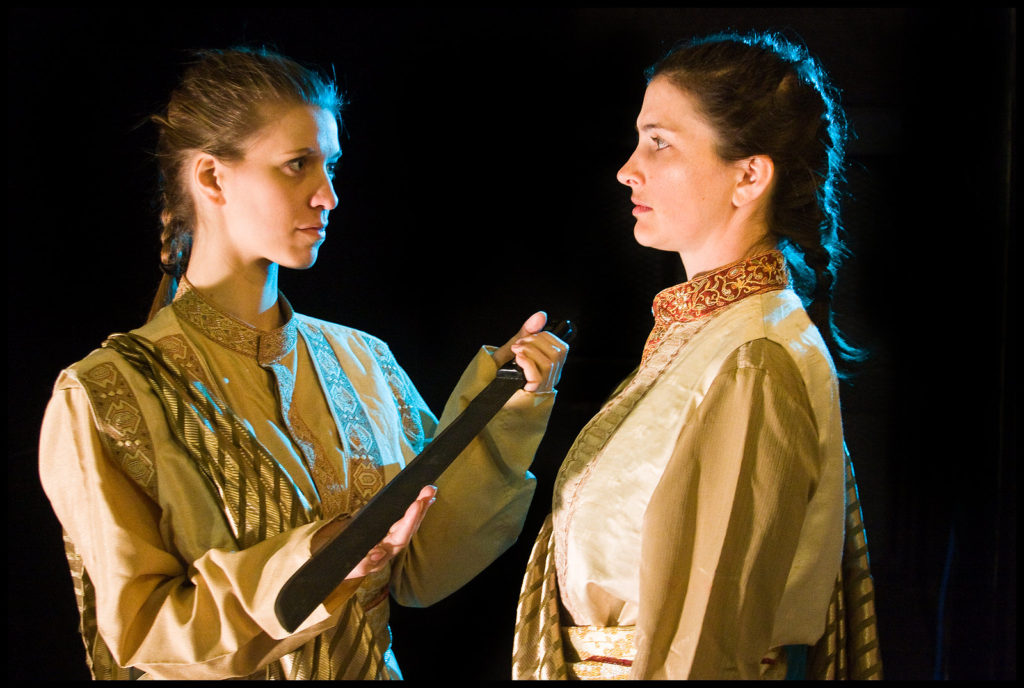
Photography
Hel’s primary image was lit with a small, gridded beauty dish positioned to the far left and positioned to cast split lighting on Sara’s face so that the left side of Hel’s face would be lit, while the right side would be in shadow. This effect was enhanced not only by Rose Nobs’s wonderful makeup but by the white contact Sara wore on the shadow side, which reflected the light exceptionally well. We shot the session at 85 mm, f/8, ISO 200, 1/200 sec.
For our background, we used the textured canvas that has been featured in many of the portraits for this series. A neutral beige color, it shifts easily to adopt any hue we throw at it, either in studio or in post. For Hel, casting the background in shadow would make it look cold and stony, perhaps like the halls of Hel. It seemed the best choice for our session. As usual, Elizabeth was at hand providing invaluable assistance.




Editing: The Story of a Skull

For a while, it seemed like this might be the easy one. The wardrobe, makeup, and lighting were all on point. But there was the matter of Hel’s deathly side. When we had shot the image, we considered doing skull makeup and alternatively using a plastic skull mask, but it seemed it would make far better sense to simply photograph a skull in the same position as Sara’s face and composite it into the image. Simple, right?
Not so fast. Most of the prop shops I looked into and friends I asked had skulls that would look great onstage and not so great on camera, and after a week or so searching, I decided to explore other options.
Compositing a Skull, Week 1: 3D Objects
Having failed to procure a photorealistic physical skull to photograph, I searched the internet for alternatives. In 2019, I had used a screenshot from a free online CGI skull to create Sara Robinson’s portrait for the Hauntings from a Distant Era series. I wanted to improve on that process and wondered if there was a better way to do it where I could take the lighting and angle into consideration. That’s when I discovered OBJ (object) files and how to open them in Photoshop.
Object files (I didn’t know) are 3D files that can be rotated in every position. Unfortunately, most of the really good photorealistic files are very expensive. However, in order to get the fish scale textures for “The Merrow,” I had signed up for a trial subscription to Adobe Stock. I discovered that Adobe Stock had a 3D skull model that looked decent, so I licensed that asset and brought it into the composition.
Photoshop is in the process of retiring its 3D capabilities, but in the meantime, I could turn the skull along x, y, and z axes, scaling and rotating it to line up more or less with Sara’s pose.
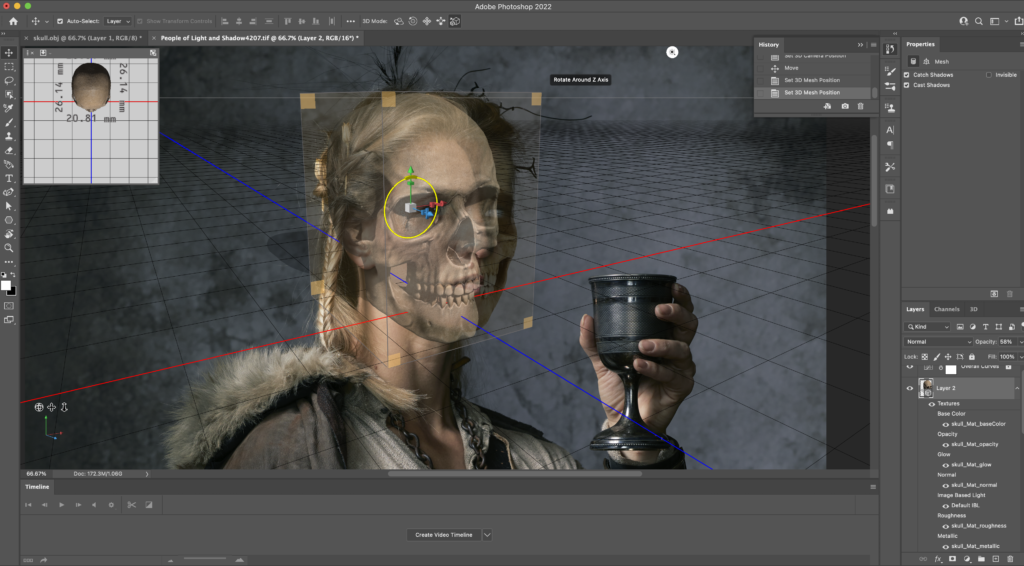
Once I was happy with the orientation of the skull, I could choose the way the 3D object was lit and move the light around to get it to match (again more or less) the lighting on Sara’s face. Note how the lighting in the image below is different from the image above.

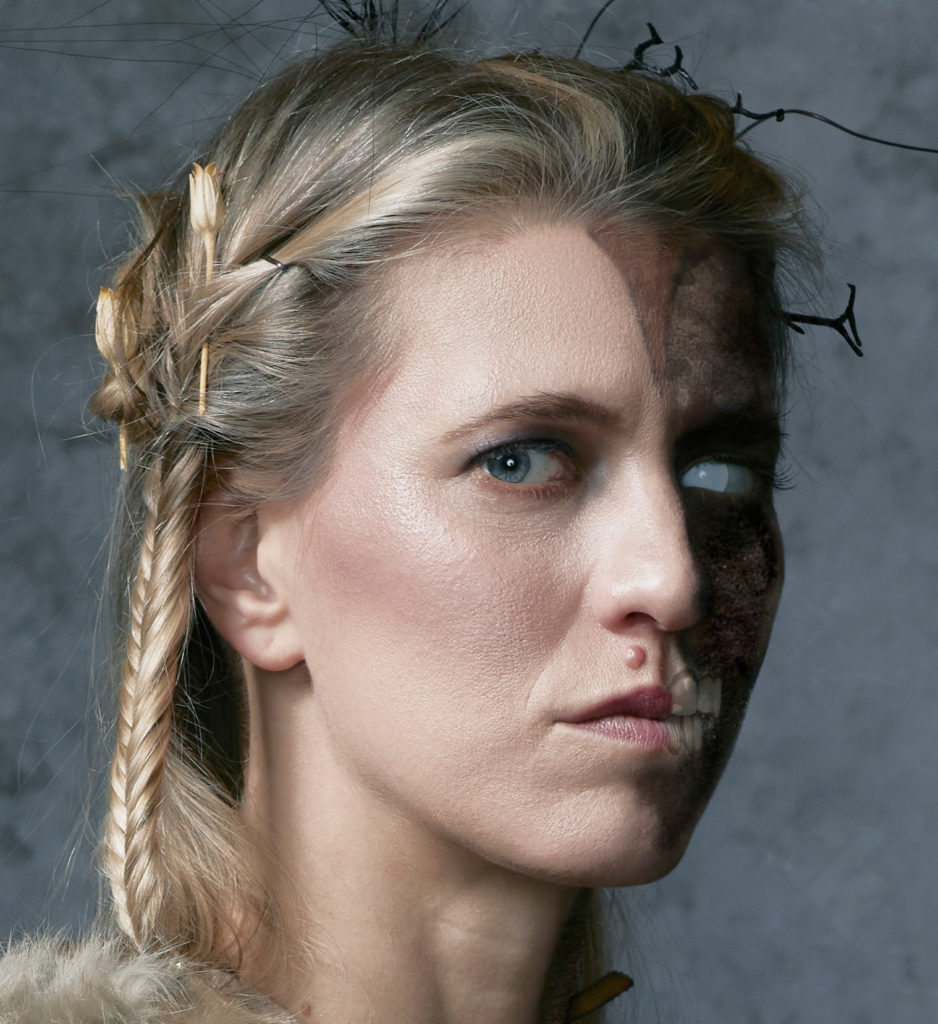
Once that was done, I noticed that the 3D model had dark and jagged edges that it hadn’t had initially. I figured out through trial and error that I needed to render the object. Rendering took a couple hours and all my laptop’s memory, and unfortunately I had to do it twice due to a mistake I made the first time. The lesson here is to get it exactly the way you want it and then render it. Once the 3D image was rendered, the jaggies were gone, and I had a skull that was facing the same way as my subject, lit the same way, just as I’d hoped.
In some ways, this is the best solution I could have hoped for, and I’m happy I learned how to do it—however, I wouldn’t do it again if I could avoid it, and yet in the end it wasn’t the ideal solution.
Compositing a Skull, Week 2: Colors and Textures
Having learned how to composite a 3D skull, I thought the journey was nearly over, but alas, it was not so.
The 3D skull might have worked if not for the rendering. Any changes that I wanted to make in positioning meant the 3D object needed to be re-rendered. And as I composited it into the face, I wasn’t happy with the way it lined up, and I wasn’t all that happy with the way the 3D skull looked. Something seemed off about it, and in fact I found that the portrait looked better without the 3D skull at all. Reading in a little more detail on Hel, I found that she is often portrayed a few different ways—sometimes as a half skeletal being; sometimes her dark side is a that of a blue-black corpse; sometimes she’s shown as half dark, half light. Since this series is The People of Light and Shadow, I thought shadow could work just fine. I increased the shadow, added some texture, and was ready to put on the final touches to unify the image. I showed it to Sara, and she asked if we there was any way to hint at the skull, or just the teeth. I decided to give it another go.
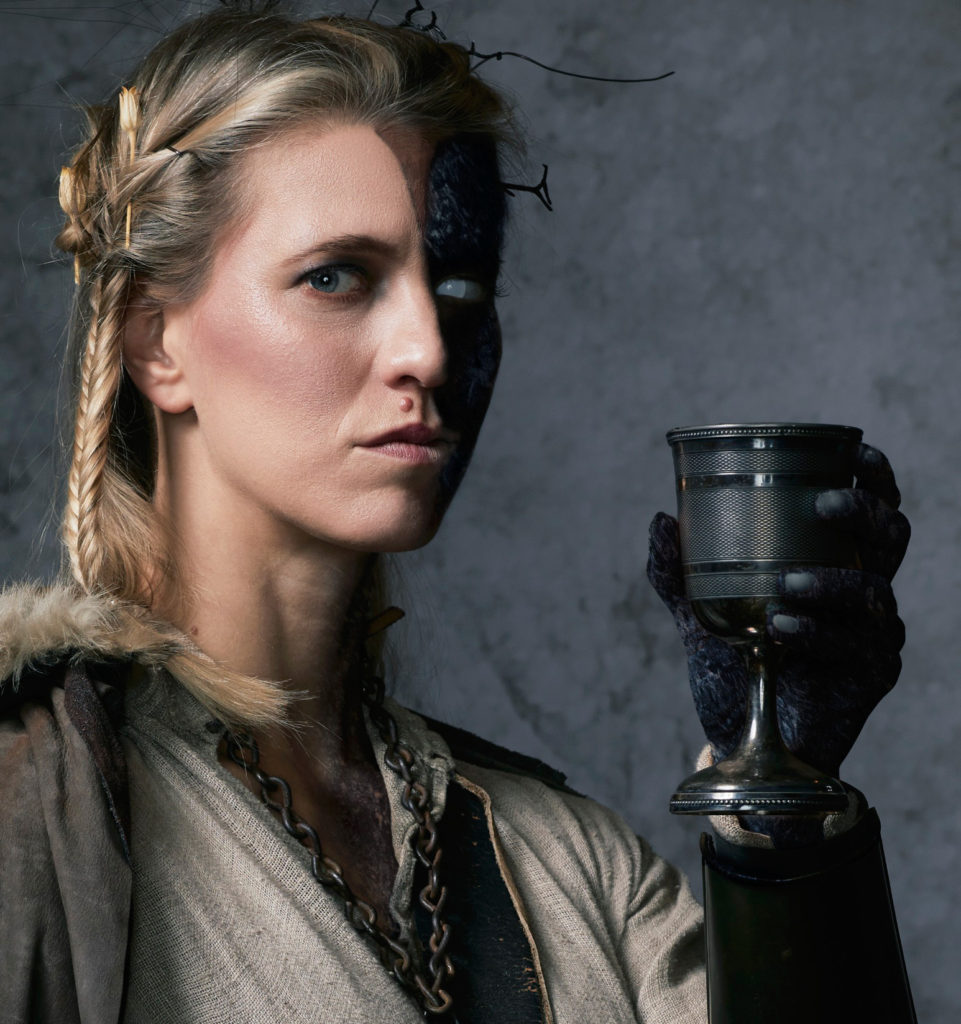
This time, I stretched, warped, and manipulated a stock skull image to fit the face. I liked the ruined texture I had used before, and I adjusted it and brushed it in along the face, hand, and one half of the chest. In keeping with the idea that Hel is often portrayed as a blue-black corpse, I changed the color of the texture to match.
After much detailed work, things were starting to look pretty good, but I wondered whether I might be able to make the transitions more interesting. I experimented with some peeling textures and learned how to brush in an effect to make it look like Hel’s skin was peeling back. Then things started to look really cool. I used some split wood textures on the fingernails of her dead hand to give them a cracked look.
By the end, the blue-black corpse look with had probably surpassed anything I’d initially envisioned for this portrait, and I learned much along the way.
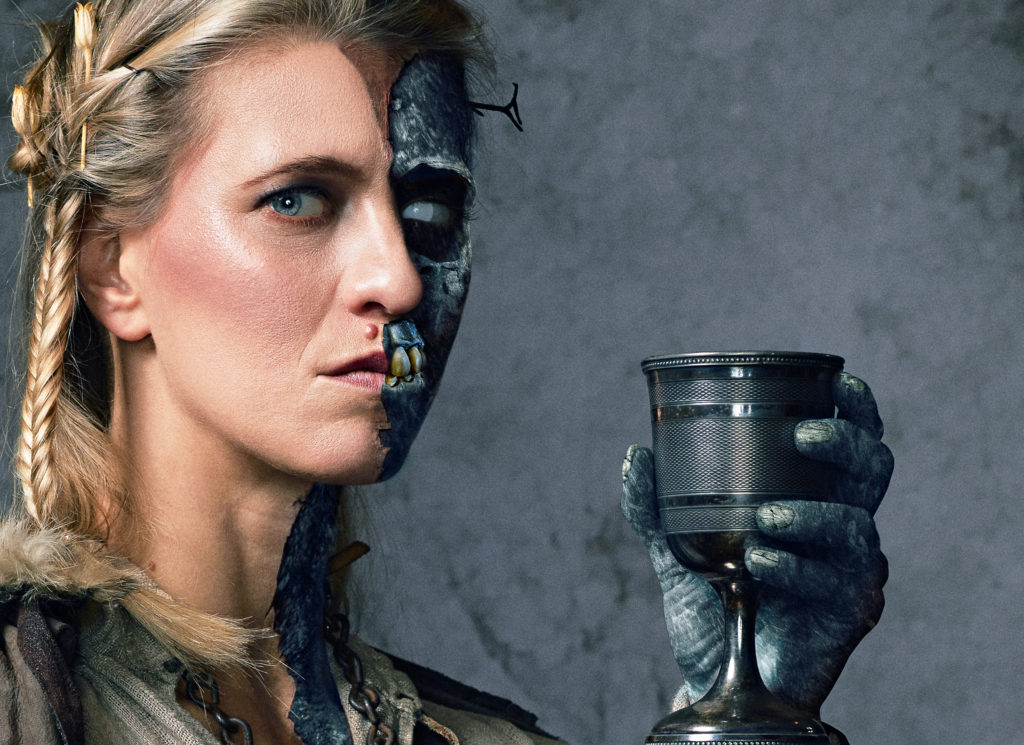

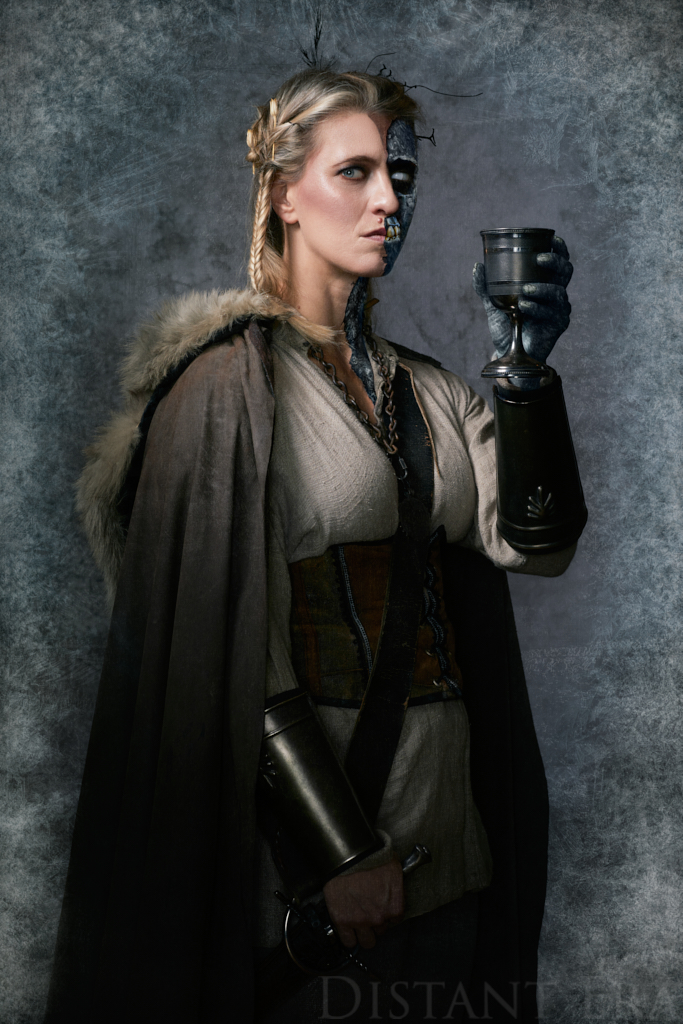
Hel, Associations and Inspirations
The Norse myths have been close to my heart since I first read about them in elementary school. I’ve felt a closer kinship with them in recent years after learning some family history (my ancestors would have followed these traditions), after reading and listening to Neil Gaiman’s Norse Mythology, and after falling in love with Blood Rage, a board game about Vikings and their gods at Ragnarok. Hel is in our language—her name and realm are still the place we tell people to go when we’re fed up. She’s been reinterpreted down the years, recently in the Marvel Cinematic Universe as played by Cate Blanchett in Thor: Ragnarok.
Sara came up with the idea to portray Hel for The People of Light and Shadow, and it seemed a natural fit for the series, in the vein of other mysterious and powerful mythic characters in the series, like the Morrigan. It also seemed an appropriate choice to photograph and edit this character during a Chicago winter—as bleak and cold as any old day in Niflheim.
Broads You Should Know
Speaking of powerful female characters from the past, Sara runs an excellent podcast called Broads You Should Know, which features extraordinary women throughout history. As we shot our session, Sara asked if I’d be interested in doing an episode with her, and last week we recorded it. I presented Izumo no Okuni, the creator of kabuki. Longtime followers of The All Worlds Traveller may remember the quarantine painting spree where I learned all about the fourteenth-century Chinese novel The Romance of the Three Kingdoms while painting figures for the Rising Sun game. In that paint/research quest, I also learned about one of the inspirations behind one of the Japanese clans in the game, the Koi Clan, which (I theorize) seem to have been inspired by Izumo no Okuni and her original kabuki troupe, and I’ve been excited to share my surely imperfect yet enthusiastic knowledge of her so far. Broads You Should Know has covered so many extraordinary women throughout history and is well worth the time to listen and learn about them.
It was wonderful hanging out and working on The People of Light and Shadow with my old D&D companion and then participating in her Broads You Should Know project. This is what friends do, getting together over the years, supporting one another’s efforts, catching up. It warmed my heart to do this project with my old friend, and I am grateful to Sara for the time and effort she put into creating this portrait with me.
Next in The People of Light and Shadow series…
From Slavic myth, the enchanting vila of the long, flowing hair…

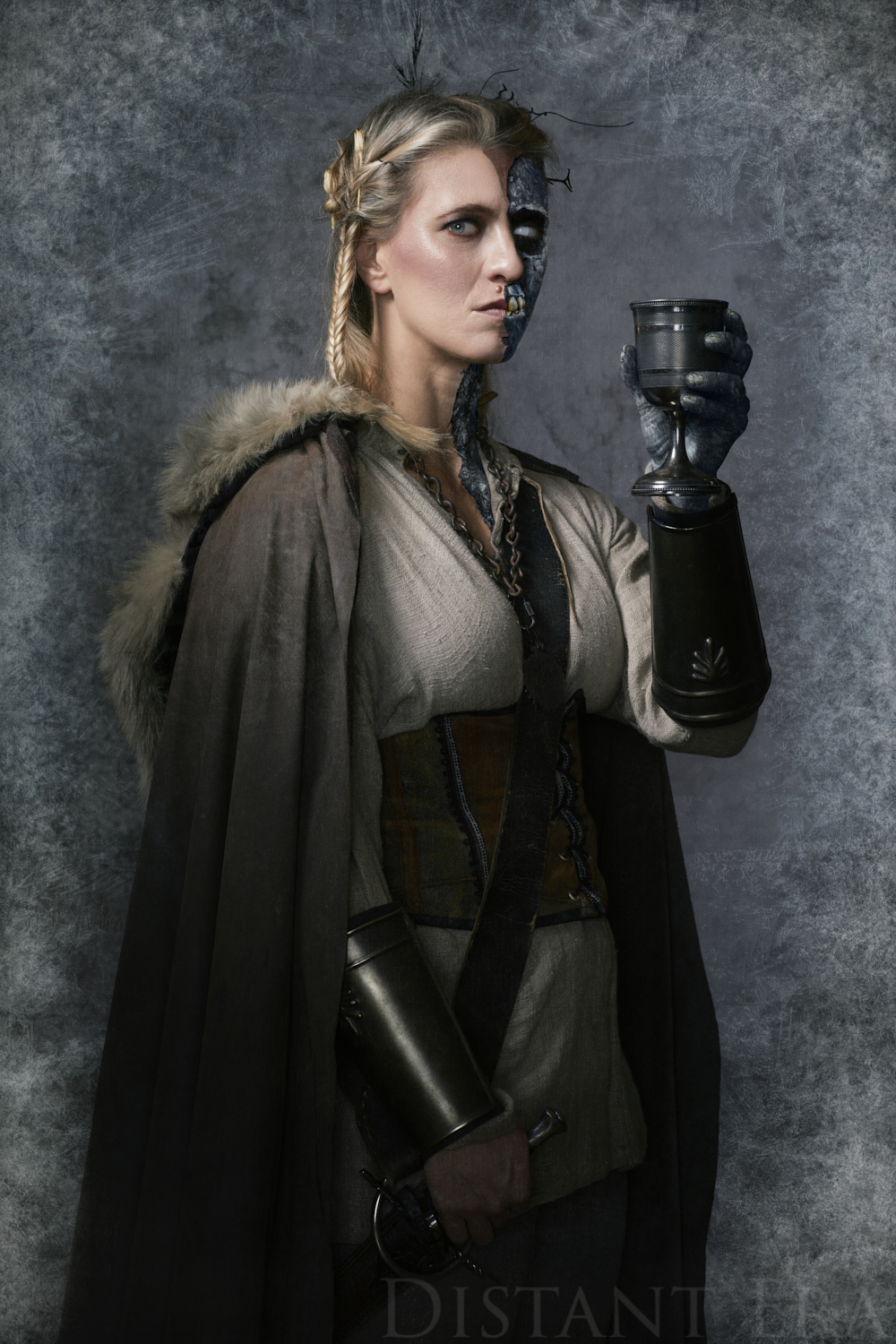
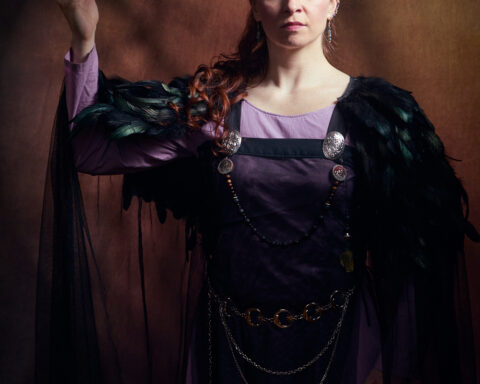

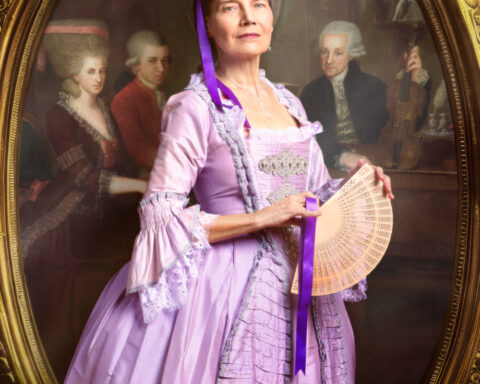
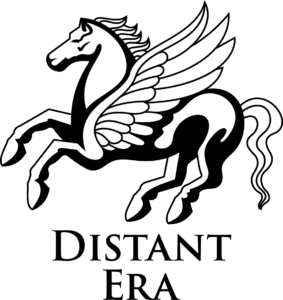
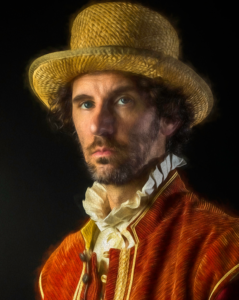
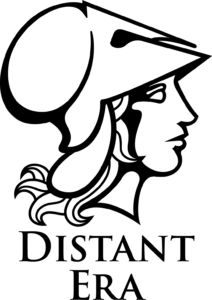
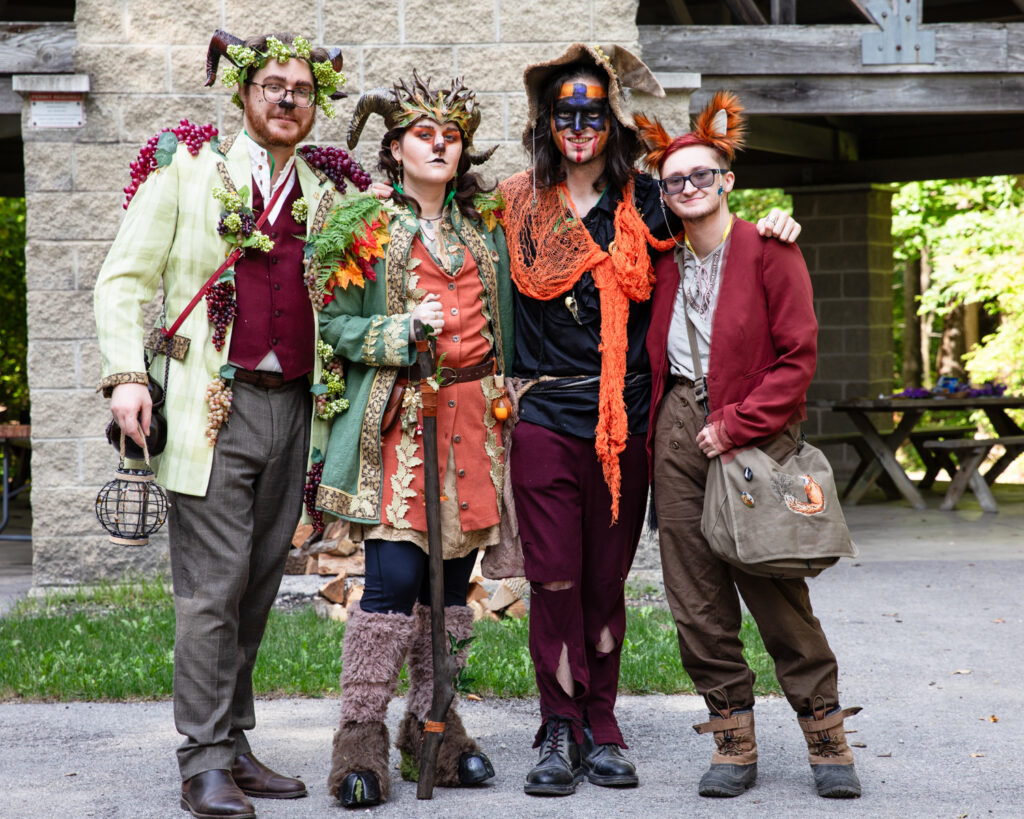
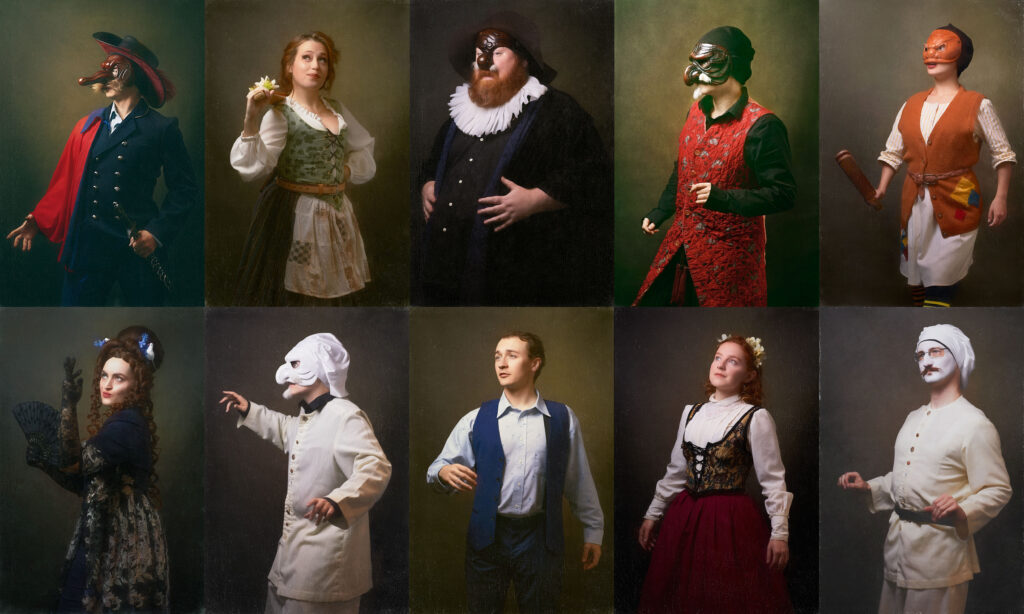
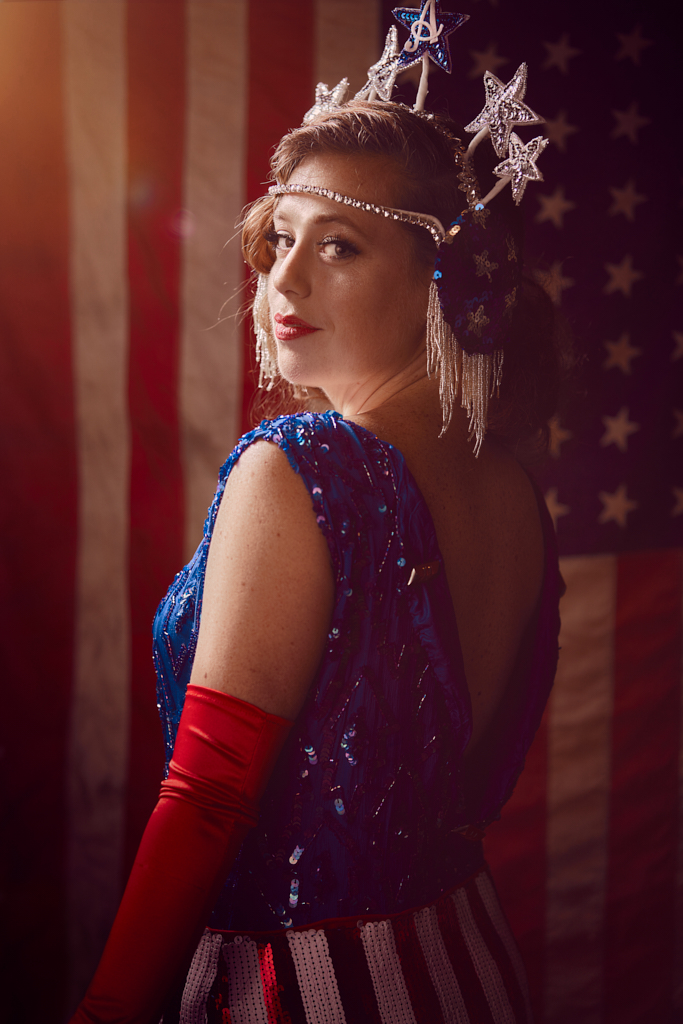
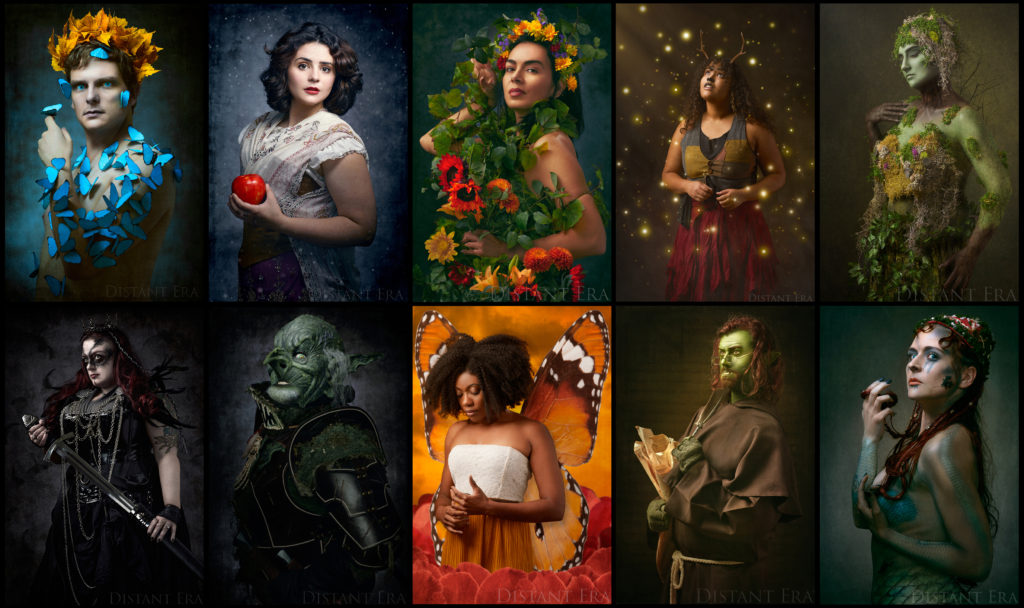
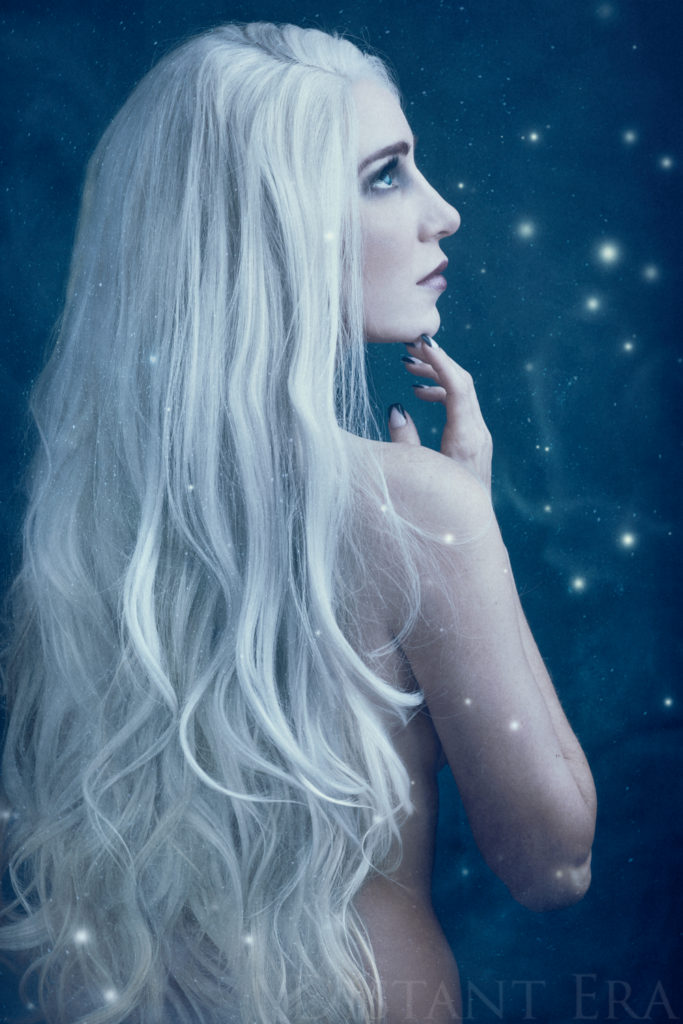
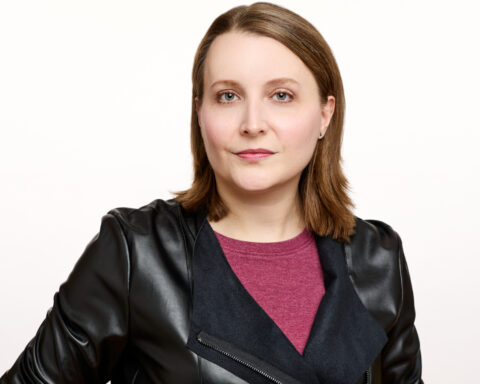
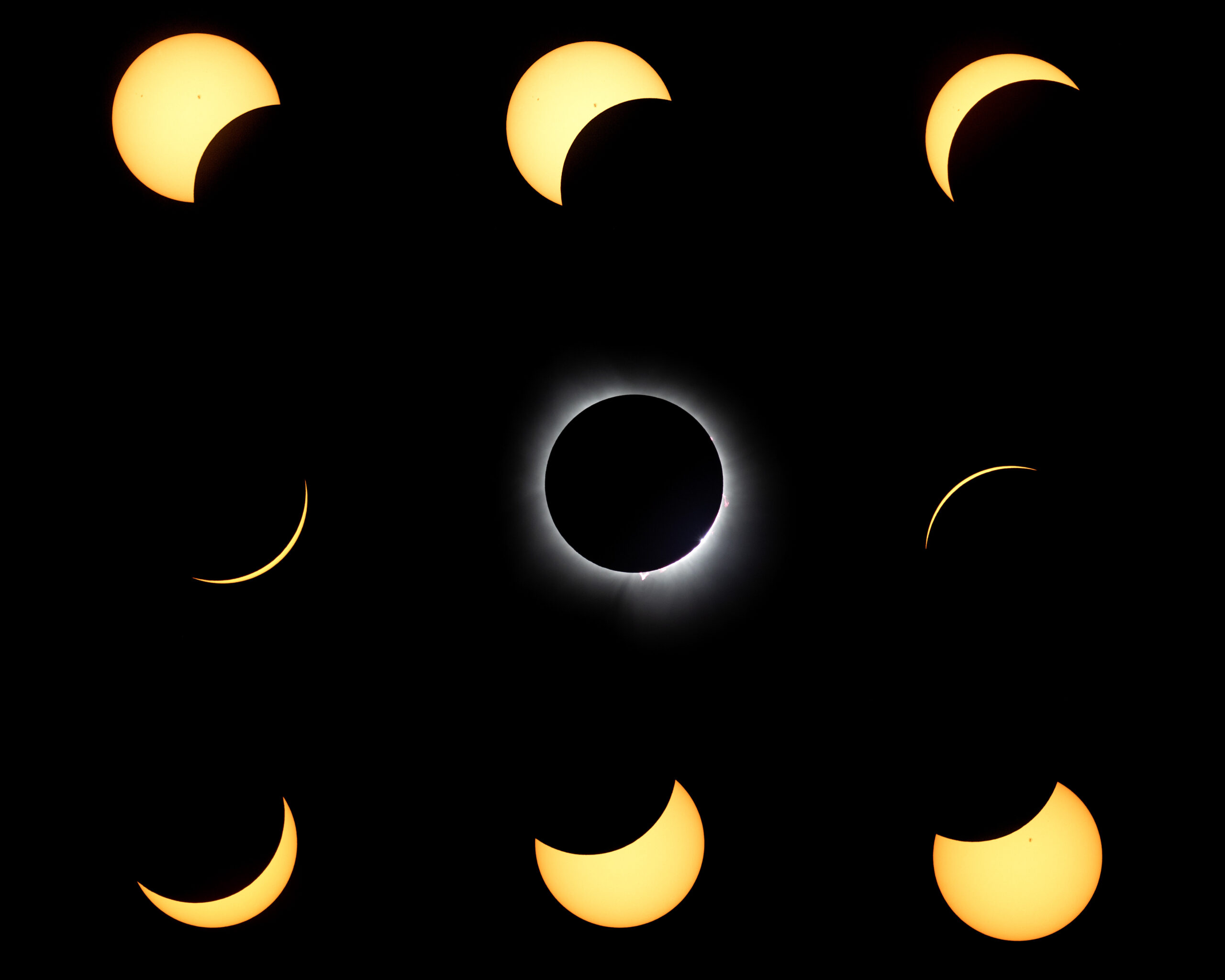
Follow Me